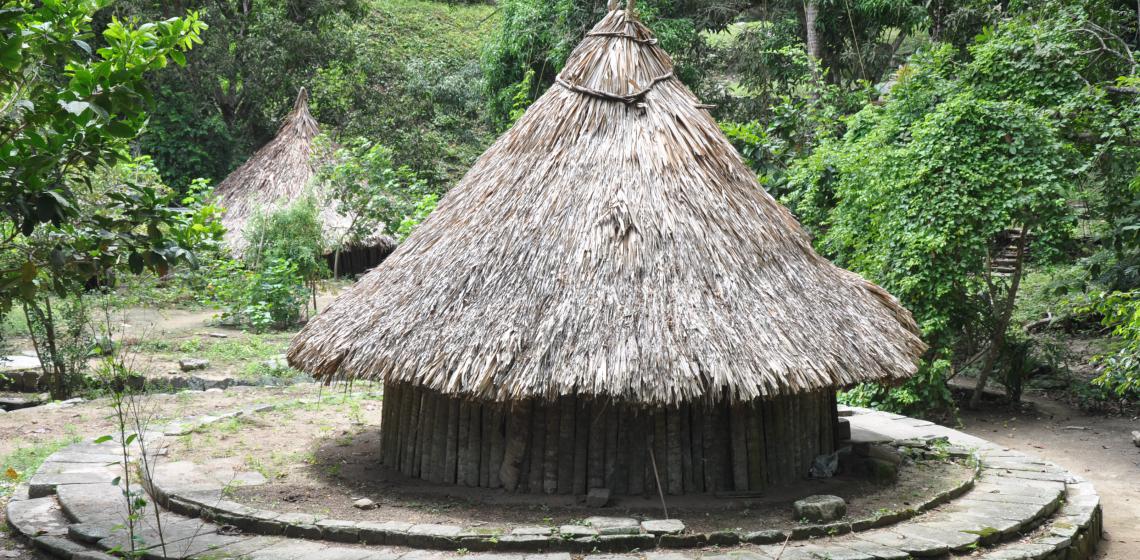
The Parque Nacional Natural Tayrona is situated in the Colombian northern Caribbean region 34 km from Santa Marta. After walking for at least an hour, climbing large rocks and bypassing some natural traps that the passage of time has left on the trail, you come to this small archaeological town called Pueblito.
Pueblito is an ancient indigenous settlement of the Chairama with both ruins and reconstructions of dwellings, canals, stairs, bridges, terraces, dry walls and drainage systems. Archaeologists estimate that this town was developed in an area of about four square kilometres. In the central part there are about 400 houses, and for all its extension are calculated more than a thousand, which could house about 4,000 inhabitants.
The urban plot of Pueblito is developed along a main axis, the Quebrada la Boquita, whose course is sinuous and runs through a small valley. Along this axis you can see terraces with retaining walls that can oscillate between 0.40 and 2.00 m in height, and on each one of them there is one or several basements of houses. The terraces are connected to each other by paths and secondary stairs that generally are detached from a main road, which in turn is an axis parallel to the ravines. Among the important roads is the one that connects Pueblito with the Cabo de San Juan de Guía crossing the settlement from east to west. The section of the road that crosses the village has an average width of 3.50 m.
Different types of constructions can be observed that can indicate differences in use and function:
• The simplest ones have as foundations a discontinuous stone ring of about six meters of diameter with two opposite doors indicated by two or more flat slabs.
• Others with diameters ranging from 9 to 14 m.
• A few have a structure using perfectly carved stones, with diameters between 22 and 24 m; Perhaps these were used as temples.
The economy of the inhabitants of Pueblito was based on agriculture, practiced in the foothills of the hill of Santa Rosa, where they had fruit trees, maize, and other plants. The diet was supplemented with fish, as evidenced by the presence of hooks, net dumbbells and remains of spines and vertebrae in dwellings.
Text sources: UNESCO, Colparques.net
Photo: by Jorge Láscar from Australia - Pueblito Bohios - Tayrona Walk - Calabazo to Pueblito, CC BY 2.0, https://commons.wikimedia.org/w/index.php?curid=31950012
